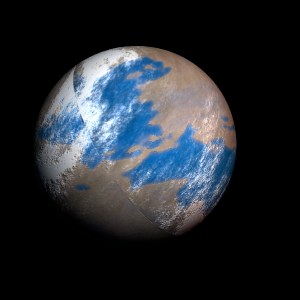|
|
Space Astro
|
Info for exoplanet "Kari Gayo Be"
| Scientific (actual) data |
|---|
| Name | Kepler-1506 b |
| Planet status | Confirmed |
| Radius | 0.118 |
| Orbital period | 14.0329 |
| Discovered | 2016 |
| Updated | 2021-02-05 |
| Tconj | 2454970 |
| Publication | Announced on a website |
| Detection type | Primary Transit |
| Alternate names | 2MASS J19203597+4127525 b, K03458.01, KIC 6118370 b, KOI-3458 b, KOI-3458.01, WISE J192035.97+412752.5 b |
| Star name | Kepler-1506 |
| Right ascension | 290.15° |
| Declination | 41.46° |
| Mag j | 14.51 |
| Mag h | 14.117 |
| Mag k | 14.082 |
| Star distance | 1318 |
| Star metallicity | -0.05 |
| Star mass | 0.95 |
| Star radius | 0.93 |
| Star age | 3.98 |
| Star temperature | 5676 |
| Star alternate names | 2MASS J19203597+4127525, KIC 6118370, KOI-3458, WISE J192035.97+412752.5 |
| Wikipedia article | Kepler-1506 b |
Back
| |
| Fictional info (?) |
|---|
| Suggested name | Kari Gayo Be |
| Planet type | Cold planet |
| It has the longest rotation period (445 days) of any planet in its solar system and rotates in the opposite direction to most other planets. |
| Atmosphere | Formaldehyde | 99% |
| Nitrogen | 0.53% |
| Argon | 0.26% |
| Hydrogen peroxide | 0.025% |
| Carbon dioxide | 0.015% |
| Hydrogen chloride | 0% |
| Atmospheric pressure | 12 bar |
 |
| No known satellites |
| Google search for Kari gayo be |
|
Website by Joachim Michaelis
|
|
|
|